Last week, Luke Holder, head chef at the wonderful spa-hotel Lime Wood tweeted about a new dish on the restaurant’s menu: Sausage-stuffed quail with ’nduja beans.
He had me at ’nduja beans, and – although I have no idea about his recipe – I made a batch the other day, and my version proved to be profoundly delicious and handily versatile. Until a few years ago, the spicy, spreadable sausage ’nduja was little known beyond its native Calabria, but it is now fairly easy to find, for example in Italian specialty stores. Our friends in the UK and Europe can buy the Italian product; here in the US, a number of American-made ’ndujas are available. They vary a great deal in composition and flavor, but they are all very hot-spicy from a variety of chilies; I’ve tried three or four and have yet to find one I didn’t like. So you can be pretty confident that whatever brand you come upon will work nicely for this and other recipes (including these irresistible yeast-raised buns).
For my batch, I used a pound (450 grams, but 500 grams would make more sense in a metric household) of enormous Spanish dried beans – judiones – soaked overnight, but any dried beans will work. Indeed, if I’d had a sack of cannellini I’d have chosen those. The cooking began with a big carrot and a medium onion plus a mere three inches of celery, all neatly cut into small (1/8 inch / 3 mm) dice, and half a clove of garlic, minced. I sweated the vegetables in olive oil and when they were soft added a 2-ounce (60-gram) lump of ’nduja, breaking it up with a spoon; it soon melted into the vegetable mixture, and when it did I threw in a few fresh sage leaves (rosemary would be good, and so would thyme). Now, I added the soaked beans and water to generously cover, along with some salt (yes, I salt bean-cooking water; note in this case that the ’nduja already contains salt, so be circumspect with the seasoning). The liquid instantly turned a gorgeous bright red from the chilies in the sausage; a deep inhalation of its vapors was properly sinus-clearing.
Simmer the beans, partly covered, until tender and creamy but not falling apart; depending on the size of the beans and how long ago they’d been dried, this could take 40 minutes or three times that.
Now you can investigate the versatility of this dish: Taste a bean together with a spoonful of its chili-red broth. Hot stuff, right? Now taste a bean without that liquid: It has taken on some of the sausage’s spice and some of its porkiness, but its heat level is suitable for all but the frailest of palates. On two successive nights, Jackie and I took advantage of both of those personalities.
First, we took the fiery route: I used a fork to coarsely crush some of the beans in a pan and added enough of the broth to moisten them nicely; crushing the beans made the effect even spicier because the soft interiors were now mixed with ’nduja sauce. I topped each portion with a four-ounce (115-gram) portion of hake fillet, simply pan-fried. You’d think the beans would have completely devastated the delicate fish, but they didn’t: This was a nicely balanced dish that tasted somehow Spanish, at least by association (hake with paprika-based accompaniments is not unknown in Spain).
For the next night: A day in advance I braised a piece of not-too-fatty pork belly that the butcher had boned, rolled and tied into a neat cylinder. Flavors were generic: aromatic vegetables, white wine, vegetable-mushroom and chicken stocks, along with thyme and parsley. As it was cooking, I sautéed a mess of sliced onions in butter and set these aside. When the meat was done, I let it cool to tepid in the casserole, then chilled it, wrapped tightly in plastic wrap to ensure a nice neat shape; I strained the braising liquid, pressing the vegetables in the sieve to extract their flavor, and put this to chill as well so that the substantial layer of fat could be removed without difficulty.
Come dinner time, I cut the cold pork into one-inch (25-mm) slices and browned them lightly in a skillet, initially covered, then not – slowly, so they would heat through. I added the sautéed onions to the rich braising liquid and tinkered with the seasoning. As for the beans, I used a slotted spoon to lift some out of their chili-hot broth and reheated them in the pork’s onion sauce. When I tasted, I felt a light jolt of extra heat would be welcome – even for our guest, who is not known as a chili-head – so I added a spoonful of the red liquid.
Sauce and beans went onto the plate, and a slice of pork was set on the beans and in turn topped with onions and a little more sauce. Here we had creamy beans infused with flavor but not with fire, in a sauce informed but not dominated by ’nduja. And who can assert that beans of any kind are not one of the finest accompaniments for braised pork?
A container of leftover ’nduja beans is now in our fridge; some will end up in a paella-like rice dish along with the remains of the braised pork, and I’m anticipating a delicious outcome.
Next on the to-do list: Contact Luke Holder at Lime Wood and find out what he means by ’nduja beans.
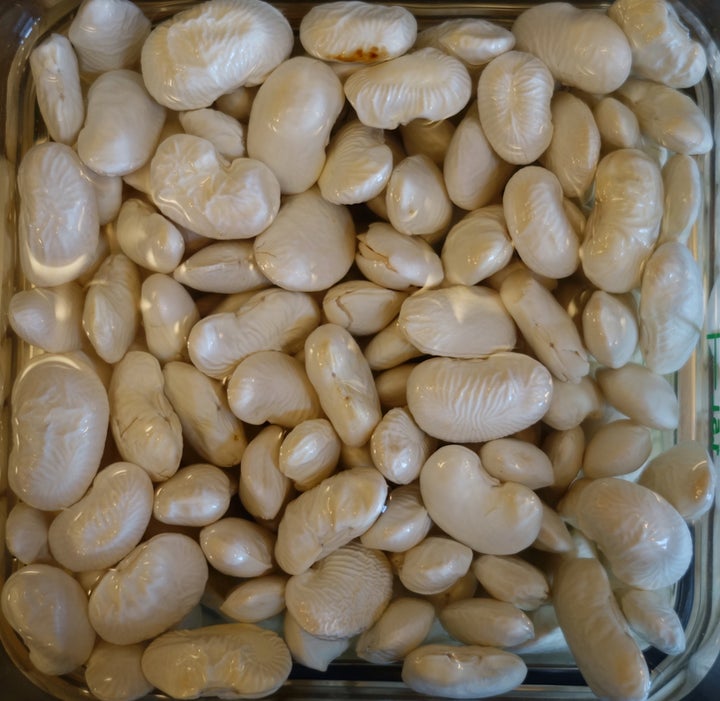
Enormous beans from Spain: Judiones
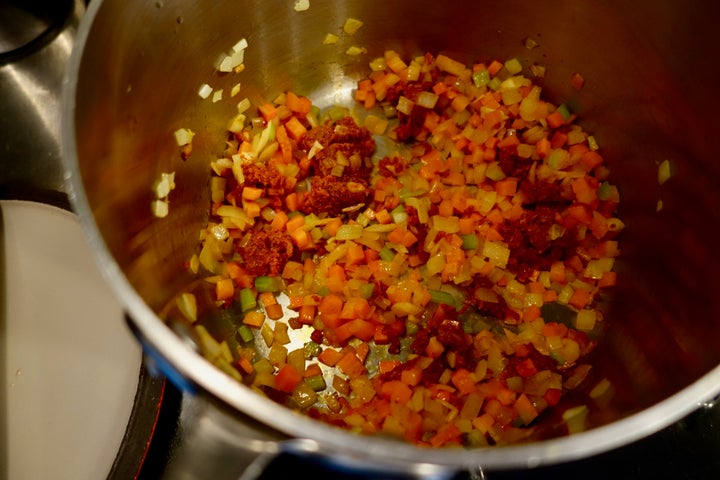
Adding ’nduja to aromatic vegetables in the bean pot
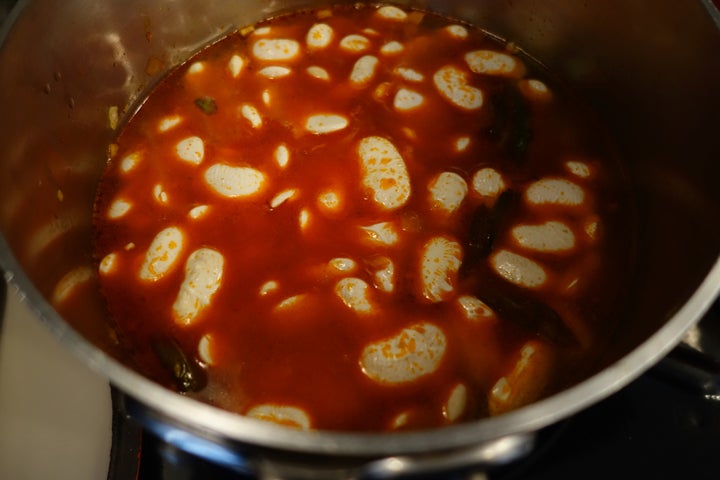
The chilies in the ’nduja turn the water bright red
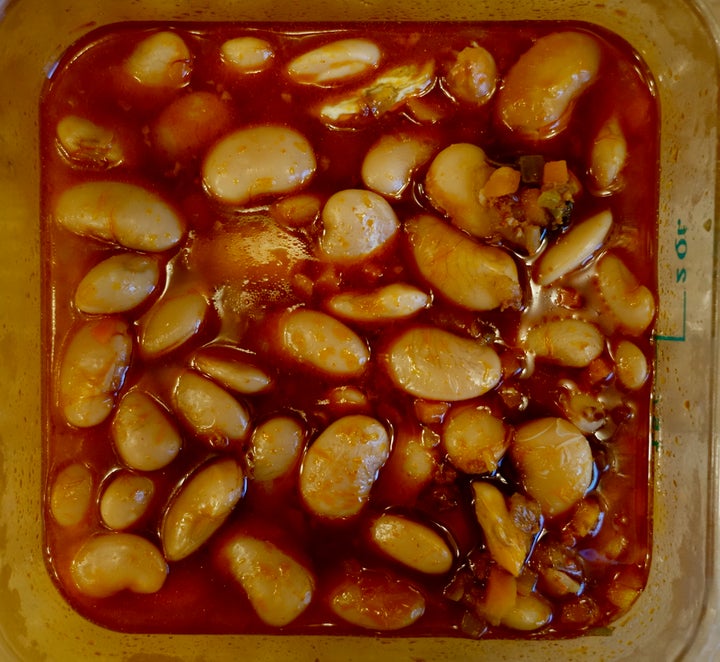
The beans, cooling
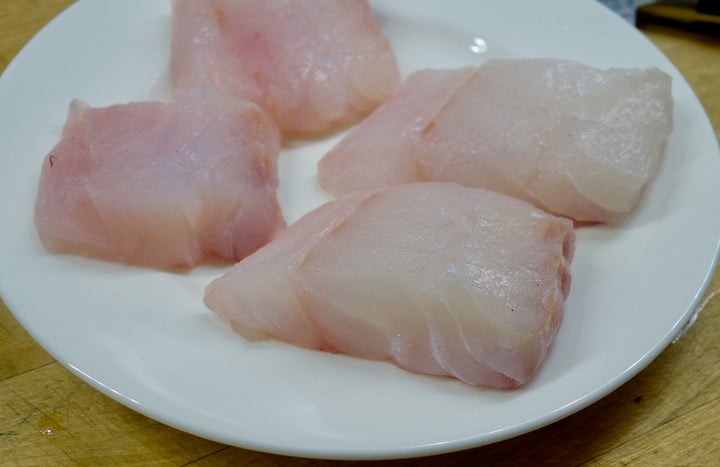
Nice hake fillets from Long Island waters
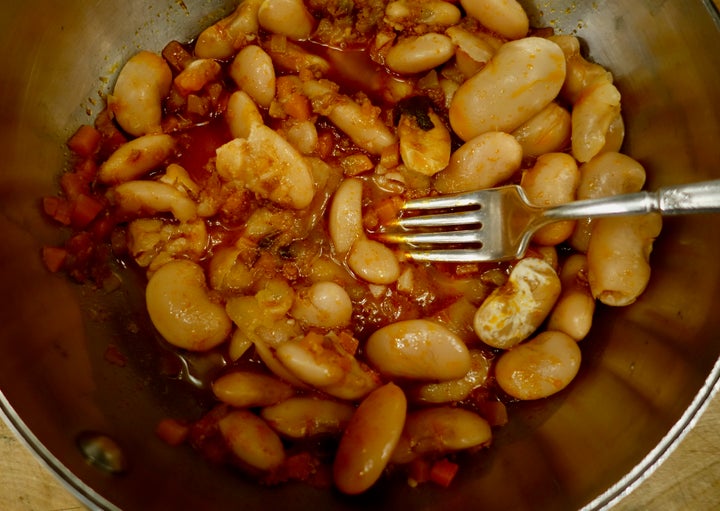
Coarsely mashing beans for the hake: the spicy option

Hake with crushed ’nduja beans

Lifting the beans out of their broth leaves behind the hottest part
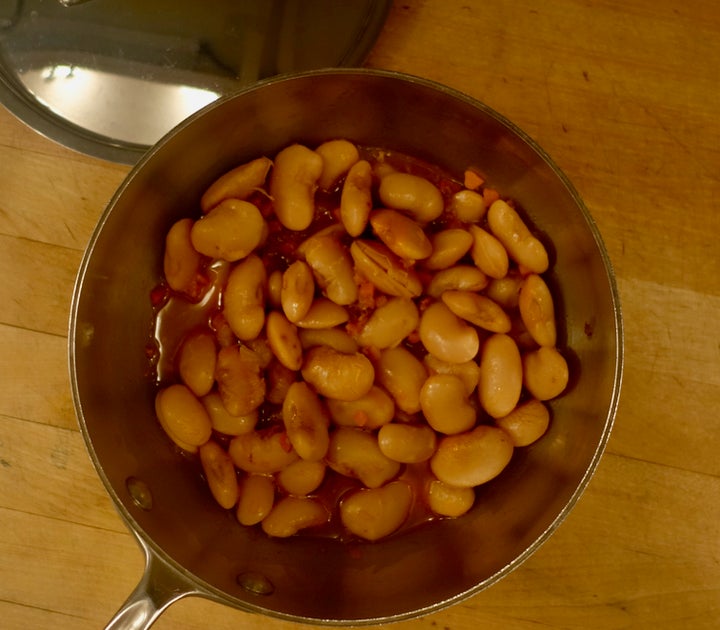
Beans heated in sauce from braised pork belly

Braised pork belly with onions and ’nduja beans